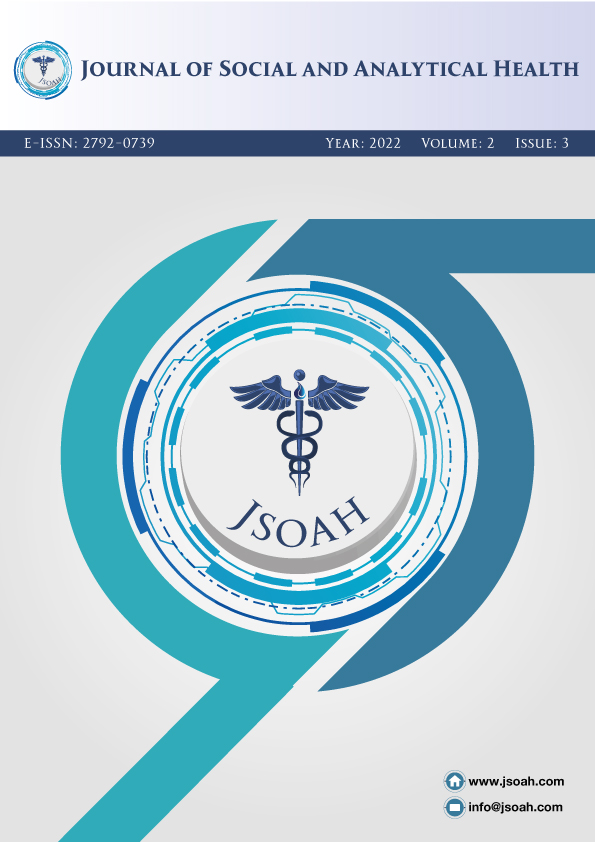Risk factors and prognosis of acute ischemic stroke after coronary angiography and percutaneous coronary intervention
DOI:
https://doi.org/10.5281/zenodo.7077581Keywords:
Acute Ischemic Stroke, Coronary Angiography, Percutaneous Coronary InterventionAbstract
Aim: Aim of this study is to analyze the incidence, predictors and outcomes of stroke in patients who underwent coronary angiography and percutaneous coronary intervention at our center. Materials-Methods: This study was conducted in a tertiary health center in Ankara/Turkey. Sixteen patients who had a stroke after coronary angiography and percutaneous coronary intervention were included in the study as a case group. The control group consisted of 80 patients. It is a retrospective study. Hemorrhagic stroke cases were excluded. All participants are ischemic stroke cases. Results: The average age of the participants is 69.6+12.1 years. Of the participants, 59 (61.5%) were male and 37 (38.5%) were female. The incidence of symptomatic cerebral infarction after coronary angiography or percutaneous coronary intervention was 16 cases (0.16%). Coronary angiography and percutaneous coronary intervention was performed in eight patients. No significant difference was observed between the groups in terms of use of antiplatelet drugs, statins, beta-blockers, warfarin or oral anticoagulants. Conclusion: Multi-vessel disease, conjestive heart failure, low ejection fraction and chronic renal failure were found to be risk factor for the development of coronary angiography or percutaneous coronary intervention related stroke.
References
Dalen JE, Alpert JS, Goldberg RJ, Weinstein RS. The epidemic of the 20(th) century: coronary heart disease. Am J Med. 2014;127(9):807–812.
Bauersachs R, Zeymer U, Brière J-B, Marre C, Bowrin K, Huelsebeck M. Burden of coronary artery disease and peripheral artery disease: A Literature Review. Cardiovasc Ther. 2019;2019:8295054.
Tokushige A, Miyata M, Sonoda T, Kosedo I, Kanda D, Takumi T, et al. Prospective Study on the Incidence of cerebrovascular disease after coronary angiography. J Atheroscler Thromb. 2018;25(3):224–232.
Ahmad M, Mehta P, Reddivari AKR, Mungee S. Percutaneous coronary ıntervention. In Treasure Island (FL); 2022.
Doris M, Newby DE. Coronary CT Angiography as a diagnostic and prognostic tool: perspectives from the Scot-Heart trial. Curr Cardiol Rep. 2016;18(2):18.
Mozaffarian D, Benjamin EJ, Go AS, Arnett DK, Blaha MJ, Cushman M, et al. Heart disease and stroke statistics-2016 update: a report from the American Heart Association. Circulation. 2016;133(4):e38-60.
Aday AW, Beckman JA. Medical management of asymptomatic carotid artery stenosis. Prog Cardiovasc Dis. 2017;59(6):585–590.
Ruan Y, Guo Y, Zheng Y, Huang Z, Sun S, Kowal P, et al. Cardiovascular disease (CVD) and associated risk factors among older adults in six low-and middle-income countries: results from SAGE Wave 1. BMC Public Health. 2018;18(1):778.
Cardi T, Kayali A, Trimaille A, Marchandot B, Ristorto J, Hoang VA, et al. Prognostic value of ıncomplete revascularization after percutaneous coronary ıntervention following acute coronary syndrome: focus on CKD patients. J Clin Med. 2019;8(6):80.
Staszczak B, Malinowski KP, Wańha W, Siudak Z, Jędrychowska M, Susuł M, at al. Frequency and predictors of diagnostic coronary angiography and percutaneous coronary intervention related to stroke. Kardiol Pol. 2021;10: 1099–1106.
Korn-Lubetzki I, Farkash R, Pachino RM, Almagor Y, Tzivoni D, Meerkin D. Incidence and risk factors of cerebrovascular events following cardiac catheterization. J Am Heart Assoc. 2013; 2(6): e000413.
Goel K, Gupta T, Gulati R, Bell MR, Kolte D, Khera et al. Temporal trends and outcomes of percutaneous coronary interventions in Nonagenarians: a national perspective. JACC Cardiovasc Interv. 2018; 11(18): 1872–1882.
Albaeni A, Harris CM, Nasser H, Sifontes S, Hasan SM, Guduru S et al. In-Hospital acute ischemic stroke following ST-elevation myocardial infarction. Int J Cardiol Heart Vasc. 2020;31:100684.
Karalis DG, Quinn V, Victor MF, Ross JJ, Polansky M, Spratt KA, et al. Risk of catheter-related emboli in patients with atherosclerotic debris in the thoracic aorta. Am Heart.1996;131:1149-1155.
Khatibzadeh M, Mitusch R, Stierle U, Gromoll B, Sheikhzadeh A. Aortic atherosclerotic plaques as a source of systemic embolism. J Am Coll Cardiol. 1996; 27(3): 664–669.
Alkhouli M, Alqahtani F, Tarabishy A, Sandhu G, Rihal CS. Incidence, predictors, and outcomes of acute ıschemic stroke following percutaneous coronary ıntervention. J Am Coll Cardiol Intv. 2019;12:1497–1506.
Kawamura A, Lombardi DA, Tilem ME, Gossman DE, Piemonte TC, Nesto RW. Stroke complicating percutaneous coronary intervention in patients with acute myocardial infarction. Circ J. 2007; 71(9): 1370–1375.
Werner N, Bauer T, Hochadel M, Zahn R, Weidinger F, Marco J et al. Incidence and clinical impact of stroke complicating percutaneous coronary intervention: results of the Euro heart survey percutaneous coronary interventions registry. Circ Cardiovasc Interv. 2013; 6(4): 362–369.
Aggarwal A, Dai D, Rumsfeld JS, Klein LW, Roe MT, Incidence and predictors of stroke associated with percutaneous coronary intervention. Am J Cardiol. 2009;104:349–353.
Dukkipati S, O’Neill WW, Harjai KJ, Sanders WP, Deo D, Boura JA, et al. Characteristics of cerebrovascular acci- dents after percutaneous coronary interventions. J Am Coll Cardiol. 2004; 43: 1161-1167.
Abdel-Latif A, Misumida N. Ischemic stroke after percutaneous coronary intervention. J Am Coll Cardiol Intv. 2019;12:1507-1509.
Li W, Hou M, Ding Z, Liu X, ShaoY, Li X. Prognostic Value of neutrophil-to-lymphocyte ratio in stroke: a systematic review and meta-analysis. Front Neurol. 2021;12:686983.
Kriszbacher I, Koppan M, Bodis J. Inflammation, atherosclerosis, and coronary artery disease. N Engl J Med. 2005;353:429–430.
Elkind MSV, Boehme AK, Smith CJ, Meisel A, Buckwalter MS. Infection as a stroke risk factor and determinant of outcome after stroke. Stroke. 2020;51:3156–3168.
Petrone AB, Eisenman RD, Steele KN, Mosmiller LT, Urhie O, Zdilla MJ. Temporal dynamics of peripheral neutrophil and lymphocytes following acute ischemic stroke. Neurol Sci. 2019;40:1877–1885.
Gill D, Veltkamp R. Dynamics of T cell responses after stroke. Curr Opin Pharmacol. 2016;26:26–32.
Yoon GS, Choi SH, Woo S, Baek Y, Park S, Shin S et al. Neutrophil-to-lymphocyte ratio at emergency room predicts mechanical complications of ST-segment elevation myocardial infarction. J Korean Med Sci. 2021;36:e131.
Downloads
Published
How to Cite
Issue
Section
License
Copyright (c) 2022 Journal of Social and Analytical Health

This work is licensed under a Creative Commons Attribution-NonCommercial 4.0 International License.


